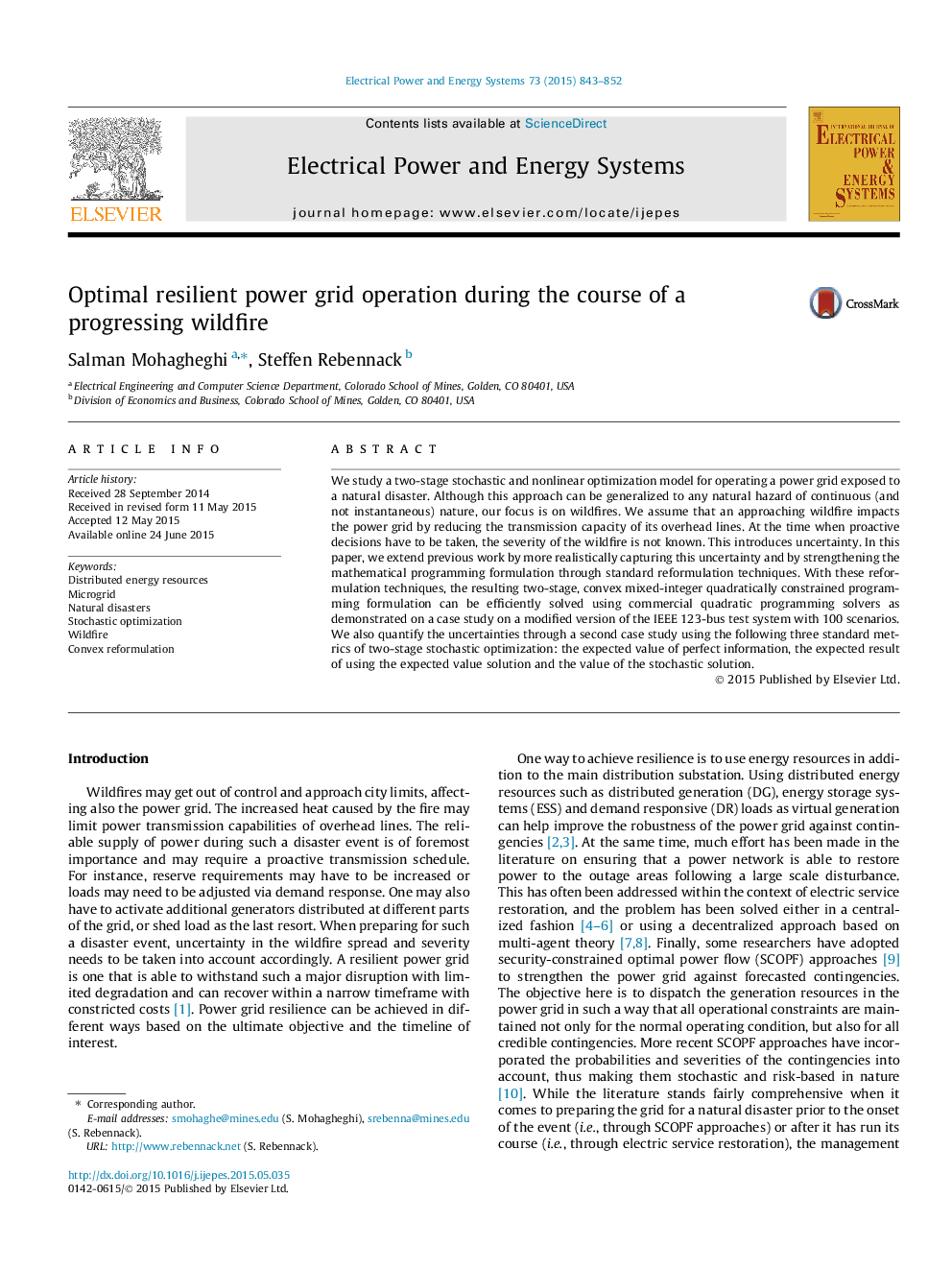| Article ID | Journal | Published Year | Pages | File Type |
|---|---|---|---|---|
| 399288 | International Journal of Electrical Power & Energy Systems | 2015 | 10 Pages |
•A solution is proposed for optimal operation of a power grid during a wildfire.•We model reduced overhead conductor capacity during wildfires.•We propose a two-stage stochastic optimization energy dispatch model.•Reformulations to yield a convex mixed-integer quadratic programming problem.•Proactive energy dispatch can make the grid resilient against natural hazards.
We study a two-stage stochastic and nonlinear optimization model for operating a power grid exposed to a natural disaster. Although this approach can be generalized to any natural hazard of continuous (and not instantaneous) nature, our focus is on wildfires. We assume that an approaching wildfire impacts the power grid by reducing the transmission capacity of its overhead lines. At the time when proactive decisions have to be taken, the severity of the wildfire is not known. This introduces uncertainty. In this paper, we extend previous work by more realistically capturing this uncertainty and by strengthening the mathematical programming formulation through standard reformulation techniques. With these reformulation techniques, the resulting two-stage, convex mixed-integer quadratically constrained programming formulation can be efficiently solved using commercial quadratic programming solvers as demonstrated on a case study on a modified version of the IEEE 123-bus test system with 100 scenarios. We also quantify the uncertainties through a second case study using the following three standard metrics of two-stage stochastic optimization: the expected value of perfect information, the expected result of using the expected value solution and the value of the stochastic solution.
